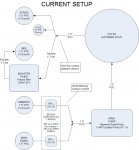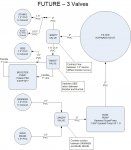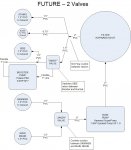- May 3, 2007
- 16,886
- Pool Size
- 20000
- Surface
- Plaster
- Chlorine
- Salt Water Generator
- SWG Type
- Hayward Aqua Rite (T-15)
I have yet to see a web site (Pentair's included) which fairly characterizes the savings of a two speed or VS pump.
Also, although the cost savings can be significant with a two speed pump, there are some downsides as well. For one, skimming just doesn't seem to work as well at lower flow rates and for some setups. Lower flow rates can result in less debris in the skimmer and more on the pool floor even with a 2x increase in run time. In some cases, the flow rate is not even sufficient to lower the weir door so the flow basically goes through the gaps in the door. So you may end up running the pool cleaner longer to make up for the some of the cleaning deficiencies. So I usually caution people that they MAY see 50% savings but results will and do vary.
Also, although the cost savings can be significant with a two speed pump, there are some downsides as well. For one, skimming just doesn't seem to work as well at lower flow rates and for some setups. Lower flow rates can result in less debris in the skimmer and more on the pool floor even with a 2x increase in run time. In some cases, the flow rate is not even sufficient to lower the weir door so the flow basically goes through the gaps in the door. So you may end up running the pool cleaner longer to make up for the some of the cleaning deficiencies. So I usually caution people that they MAY see 50% savings but results will and do vary.




